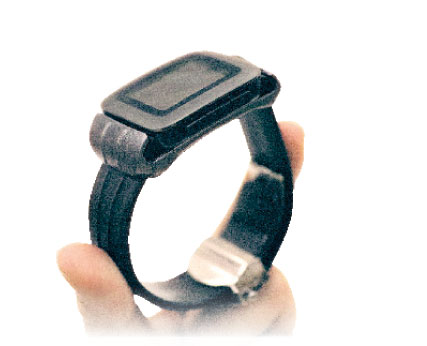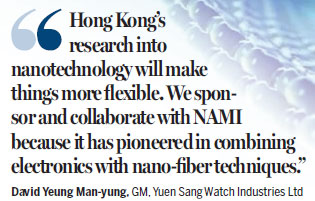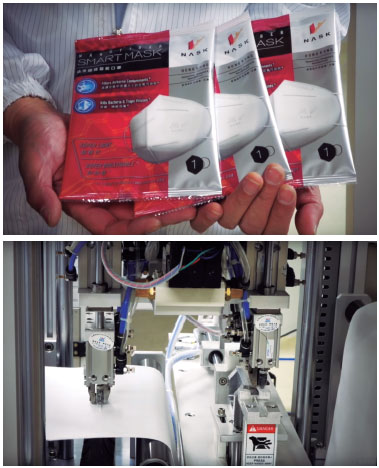Say yes to nano
Updated: 2016-01-13 08:13
By Wang Yuke(HK Edition)
|
|||||||||
Human evolution, according to scientists, is on the verge of a 'singularity', which will make the human brain a trillion times more intelligent. One key component of the scientific revolution in progress
is nanotechnology. Wang Yuke reports.
If we were to name one field of scientific research that will have the most far-reaching effects on our lives in the near future, nanotechnology must be a leading candidate.
In Hong Kong, researchers already are working on cancer treatments that will replace chemotherapy. They are delving into nano-needles for gene therapy, which can destroy abnormal skin cells, but leave healthy cells unharmed. The focus of nanotechnology research is not limited to medical science, either.
The science of manipulating tiny bits of matter, as small as one-billionth of a meter and too small even to be seen through a standard microscope, will touch every aspect of life within the next five to 10 years. The array includes cosmetics, electronics, and stain-resistant and water-resistant clothing that is more durable than ever.
Down the road, futurists see fantastic potentials. For instance, nanobots, traveling autonomously through the bloodstream, are able to make repairs to the human body. Nano-factories are able to manufacture molecules and on the darker side, invisible weapons.
How does it work? Researchers in Hong Kong are developing techniques to attach the molecules of therapeutic drugs into minute nano-particles. In that way, medication can be directed to attack cancer cells selectively without damaging healthy cells, said Chen Xianfeng, professor of City University of Hong Kong (CityU) who leads the project.
Chen foresees a day when chemotherapy and its many negative side effects can be phased out. Millions of people today receive chemotherapy but the success rate is extremely low. "The reasons include the short life of drug molecules entering the blood circulation, in addition to their low stability. There's also the widespread delivery (of those drugs) to healthy organs, tissues and cells, which leads to serious side effects as well as limited effectiveness," Chen explained.
Nano-particles can insulate drug molecules, help them to remain longer in the bloodstream, give cancer drugs greater efficacy and alleviate side effects," remarked Chen.
Infinity of application
Apart from treatment of diseases, nanotechnology will infiltrate a broad spectrum of manufacturing.
Soon, we will see a nano-fabric mask in the Hong Kong market, which can shield us from the most miniscule air pollutants and viruses. Profit Royal, a local pharmaceutical company and a partner of Nano and Advanced Materials Institute (NAMI), is developing a protective mask made of nano-spun materials. The mask has proven thus far to have higher breathability and filtration. "In conventional masks, air permeability and effective filtration cannot be achieved at once. Thinness can be realized at the cost of poor filtering function, and vice versa," said Sarinda Kwok, director of the company.
However, the nano-fabrics in the "smart mask", as they call it, are tightly-woven and form a complicated network. The end product turns out to be able to block minuscule particles, such as virus and bacteria, and also be highly porous to allow good ventilation. "It is nanotechnology that makes the two requirements compatible," Kwok accentuated.
The smart mask has been tested by Nelson Labs, a microbiological testing provider in the United States. Profit Royal says the masks filtration rate was proven at close to 100 percent against the testing company's standard.
A unique anti-bacterial formula, applied while the masks are made, allows the masks to trap viruses, neutralize bacteria, and filter potentially deadly PM2.5 contaminants.
The company plans to sell the masks on the retail market and to supply public hospitals. Clinical trials will be conducted in May this year in hospitals including Princess Margaret Hospital and Union Hospital.
Kwok says the smart mask is expected to gain strong foothold in markets where air quality has become a grave issue. "We'll target South East Asia and Asia Pacific countries," she said. Air quality in Australia is affected by wild bush fires. In the Philippines, people wear masks as a safeguard against the spread of epidemics.
The company continues to work on a mask to counter acute smog on the mainland. Stephen Kwok, another company director, explained that in many mainland cities polluted air contains oily particles from gas emissions and coal burning. "Oleophobic nano-coating techniques could offer a solution," he said.
Clothing that is not only water repellent but stain and odor resistant could be mass produced in the near future. It is developed from discoveries about lotus leaves, whose natural surface protection includes billions of nano-sized wax crystals arrayed as three-dimensional branching structures. Lotus plants grow in mud but the unique structure of the leaves protects the plants from being tainted. Water droplets wash away dirt, while being repelled by the nano-crystals immediately on contact.
Nano-sized structures found in nature are ubiquitous. "Things that happen in nature often become the foundation of scientific discovery," said Chan Kwok-sum, professor from the Department of Physics and Materials Science at CityU.
Researchers have replicated the lotus-leaf structure, creating a kind of water repellent nano-fiber, through nano-spinning, a technique like the weaving of common fabrics. The difference is nano-fiber is much more delicate, only about 1/200 to 1/300 the diameter of human hair, explained Paul Ho Kwok-keung, director of NAMI. NAMI was mandated by the Hong Kong government as the center for market-driven research in nanotechnology in 2006.
Based on the lotus leaf discovery, researchers proved that clothing and garments made of polyester or wool can be made water and stain resistant if coated with a layer of nano-fiber structure similar to lotus leaf.
NAMI collaborates with local businesses to improve consumer products, through application of a broad range of nanotechnologies. In December 2015, Legislative Council finance committee approved an additional HK$304 million from the Innovation and Technology Fund to NAMI, to a total of HK$690 million.
With the boom in nanotechnology, traditional manufacturers are incorporating nanotechnology into design and production to make their products more durable and able to operate continuously for longer hours.
Yuen Sang Watch Industries Limited, with a history dating back nearly 70 years, has applied nanotechnology to develop a flexible strap that provides battery power to smart watches. The strap is expected to be ready for mass production by the end of 2016.
The extra battery the strap can supply will keep a smart watch working for up to four days - doubling the current amount. The battery is assembled by nano-fibers, so that the strap may be bent, twisted or jolted free from short circuits or damage.
"Hong Kong's research into nanotechnology will make things more flexible," said David Yeung Man-yung, general manager of the company. "We sponsor and collaborate with NAMI because it has pioneered in combining electronics with nano-fiber techniques."
Yeung foresees more flexible electronics, functional parts and sensors in the near future, providing a significant boost to wearable electronics.
He said he is contemplating to move a touch screen panel to the watch band. "Smart watch wearers may find that when their fingers touch the display, their vision is blocked," said Yeung. "If the touch panel can be fitted on the watch band, the problem will be solved." Nano-fibers would be needed to create circuits inside the touch panel, to protect them from damage of bending, pulling or folding.
Challenges ahead
Although the application of nanotechnology appears to have infinite potential, there are obstacles along the path. "There is a gap between imagination and reality. We have many concepts and creative ideas. But most of them can only be visualized for the time being. It would probably take a decade or more to put them into mass production," professor Chan observed.
Nano-materials also need to be examined more closely to assess and predict their toxicity, said professor Chen Xianfeng, who works with a team to create a nano-needle patch to make needle injections painless.
Chen said the finger-sized patch contains millions of microscopic needles, several micrometers in height, with tip diameters of less than 500 nm. As the needles are so tiny, pain can be eliminated. Chen notes that the patch is likely to open a new window for gene therapy as well, but that part of the process may take years to develop to its full potential.
According to Ray Kurzweil, who is an inventor, a futurist and director of Engineering at Google, the scientific revolutions in genetics, nanotechnology and robotics will mark the next giant leap in human evolution, leading to non-biological implants capable of storing and accessing unlimited information, able to seek out and repair damaged tissues or in short, something very close to immortality. The consensus, among many scientists, is that this evolution will take place well within the expected lifespan of today's millennials.
Contact the writer at jenny@chinadailyhk.com
|
Battery in the smart watch strap will not be damaged by twisting thanks to nanotechnology. Provided to China Daily |


|
Nano-materials enable masks to realize both breathability and high filtration. |
(HK Edition 01/13/2016 page11)

